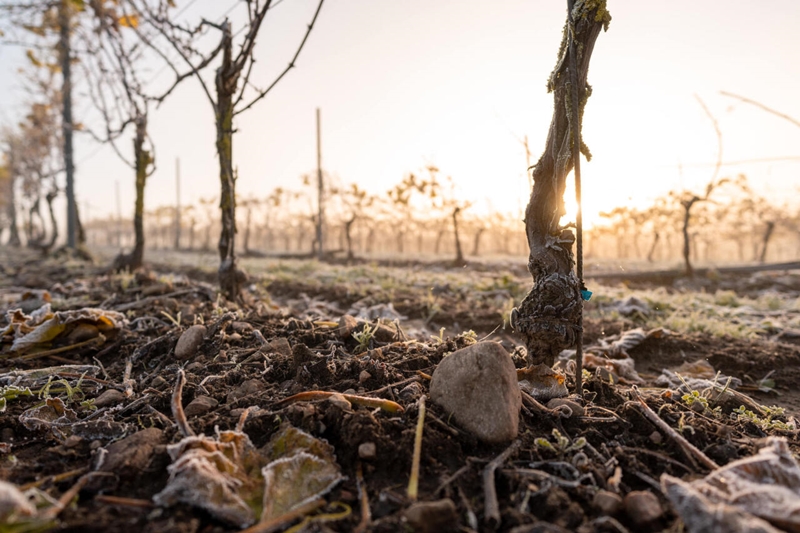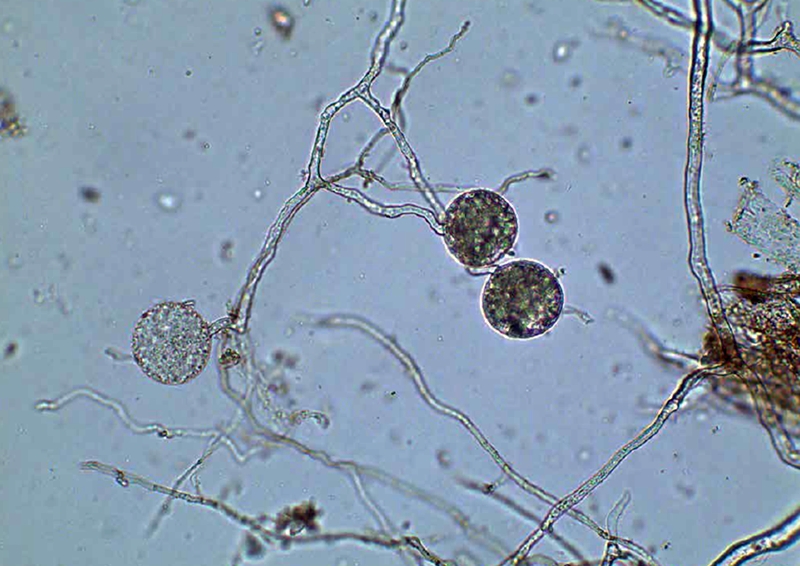The Role of Mycorrhizae in Vine Cultivation
An Insight into Glomus iranicum var. tenuihypharum

In the intricate world of agriculture, particularly in vine cultivation, the significance of symbiotic relationships between soil microorganisms and plant roots is paramount. Among these microorganisms, a notable mention is the fungus Glomus iranicum var. tenuihypharum, known for forming mycorrhizae, which play a vital role in enhancing the growth and productivity of vineyards.
Mycorrhizae are symbiotic associations between fungi and the roots of vascular plants. This relationship is mutually beneficial: roots provide amino acids, fatty acids, sugars, and other organic substances to the fungi, while in return, fungi convert soil minerals and decomposing matter into forms that plant roots can assimilate.
In vine cultivation, mycorrhization contributes to increased profitability. Mycorrhizae can be added through drip irrigation or microgranules, fostering intensive mycorrhizal colonization. This enhances root development and the absorption of water and nutrients, leading to higher yield and better quality of fruits.
Types of Mycorrhizae: Ectomycorrhizae and Endomycorrhizae
There are two primary types of mycorrhizae: ectomycorrhizae and endomycorrhizae. Ectomycorrhizae form a mantle around the finer roots without penetrating the cells, developing in the intercellular spaces of the root cortex. Endomycorrhizae, on the other hand, involve fungal hyphae penetrating the root cells, facilitating nutrient exchange in the arbúsculos.
Mycorrhizal symbiosis refers to the beneficial relationship between mycorrhizal fungi and the young cells of most agriculturally relevant plants. The fungus extends beyond the root through extramatrical mycelium, absorbing and transferring water and nutrients to the plant. Inside the root, the fungus forms arbúsculos, where it exchanges nutrients from the soil for sugars, facilitating growth and fatty acid production. This symbiosis enhances plant photosynthesis and carbon dioxide fixation, improving water and nutrient exchange.
Benefits of Mycorrhizae in Plant Cultivation
Mycorrhizae offer several advantages in plant cultivation:
- Increased water absorption and enhanced resistance to water stress.
- Improved resilience against saline cultivation conditions, particularly in Glomus iranicum var. tenuihypharum.
- Enhanced resistance to soil-borne fungal pathogens due to antagonistic effects.
- Improved nutrient absorption, especially nitrogen and phosphorus.
- Better soil structure formation through hyphal and filament aggregates.
- Hormonal effects on roots leading to increased development of the entire plant.
The Specific Role of Glomus iranicum var. tenuihypharum
Glomus iranicum var. tenuihypharum, a fungus that forms arbuscular mycorrhizae, engages in symbiosis with plant roots, exchanging nutrients and water for sugars. This interaction primarily occurs in the rhizosphere, the soil region near plant roots, where soil and root microorganisms create a beneficial ecosystem for plant development.

Benefits of Glomus iranicum var. tenuihypharum in Cultivation
This mycorrhizal fungus enhances crop cultivation in several ways:
- Promotes root system development through extensive extramatrical mycelium production.
- Increases plant tolerance to drought and high salinity.
- Maintains root continuity for better soil nutrient movement.
- Improves soil structure and microbial stimulation in the rhizosphere.
As a result, the use of Glomus iranicum var. tenuihypharum leads to better fruit quality and size, ultimately making each plant more productive.
Founded in 2007, Vinetur® is a registered trademark of VGSC S.L. with a long history in the wine industry.
VGSC, S.L. with VAT number B70255591 is a spanish company legally registered in the Commercial Register of the city of Santiago de Compostela, with registration number: Bulletin 181, Reference 356049 in Volume 13, Page 107, Section 6, Sheet 45028, Entry 2.
Email: [email protected]
Headquarters and offices located in Vilagarcia de Arousa, Spain.